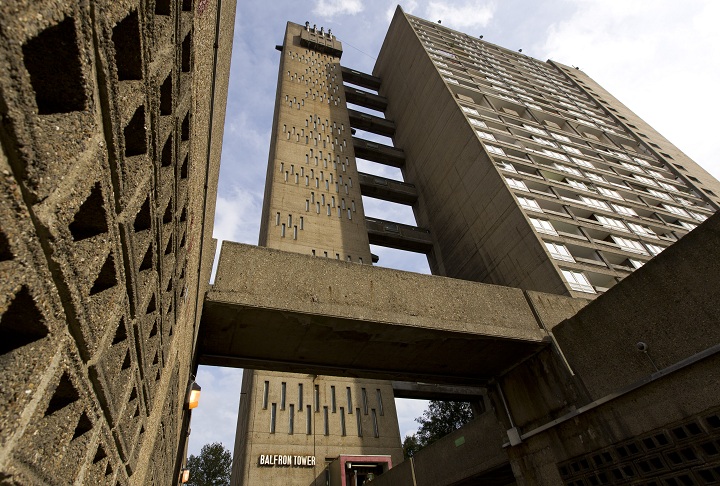Filtered by: Lifestyle
Lifestyle
London tower block tours give ‘Brutalism’ a closer look
By ALICE RITCHIE, Agence France-Presse

The Balfron Tower is pictured in east London, on 28 September, 2014. The 27-storey building is being refurbished after decades of neglect as a wave of gentrification spruces up former housing estates and casts a fresh eye on once-derided designs. AFP PHOTO/Justin Tallis
The 27-storey Balfron Tower in Poplar is being refurbished after decades of neglect as a wave of gentrification spruces up former housing estates and casts a fresh eye on once-derided designs.
"It's not beautiful," conceded Joseph Watson, program director of National Trust London, as he surveyed the spectacular views from the top floor across nearby Canary Wharf, with the Millennium Dome and the Shard in the distance.
The imposing grey block is a leading example of so-called Brutalist architecture, a post-war style named after the French word "brut", in reference to the raw concrete that figured boldly in its designs.
Built by architect and designer Erno Goldfinger, the tower was the first fulfilment of his dream of a new form of social housing—clean, open and modern.
James Bond creator Ian Fleming famously hated Goldfinger's designs, naming one of his villains after him in apparent disgust.
The trust acknowledges that the 47-year-old tower, with its separate lift shaft attached by eight mid-air walkways, is not everybody's idea of a heritage property.
But Watson insisted the building, which was listed as a conservation site in 1996, should be celebrated as much as Britain's country estates and churches.
To do so, the trust is holding a fortnight of tours of the top floor flat in which Goldfinger lived, refurbished in period style, as well as the surrounding estates.
"This was heroic architecture, this was architecture that was trying to stand up and be counted," Watson told AFP.
Looking up at the tower from the balcony of his flat in Carradale House, a smaller social housing estate next door that was also designed by Goldfinger, resident John Boardman said it was "marvelous" the trust was taking an interest.
"Over the years, I've thought they ought to pull it down or put a bomb under it. But it's an icon," said the unemployed 56-year-old, sipping a mug of tea.
'Utopian dream'
Goldfinger and his wife lived in Flat 130 for two months in 1968 to prove the desirability of high-rise living, inviting local residents to champagne-fuelled parties.
The flat has now been refitted in intricate Sixties detail as if home to a couple and their two children, complete with a Beatles poster on the girl's bedroom wall.
"It's an incredible part of design history," said the designer, Tilly Hemingway.
She highlighted Goldfinger's attention to detail, such as the planting box fitted into the balcony, and the generously proportioned rooms, as examples of how Balfron Tower was at the cutting edge of housing design in the 1960s.
The original residents came from surrounding slums that were made uninhabitable after the bombing in World War II, and many were given modern, well-equipped flats, organised so they lived near their old neighbours.
Watson said it was all part of a "utopian dream."
"Of course it doesn't work out in the long run, but it does feel like it's a very important moment for us to re-examine and to celebrate," he said.
'Luxury housing'
A landmark of east London—just as its sister building the Trellick Tower is to west London—Balfron Tower is a popular backdrop to music videos and movies, including Danny Boyle's horror movie "28 Days Later."
It stands among other major Brutalist designs from the 1950s to 1970s, including the looming J. Edgar Hoover building in Washington, DC, the High Court of Australia and the Philippine International Convention Center.
The Balfron Tower declined in the 1980s and 1990s, the building neglected and its halls stalked by drug dealers, and is now set for a major refurbishment.
Most of the state-subsidised residents have been moved out and all 146 flats are set to be redeveloped and sold off, according to the local housing association.
Those involved in the National Trust tours acknowledge the irony of the imminent end of Goldfinger's dream of low-cost, well-designed housing.
"I don't fully agree with selling it all off privately, especially as I've heard about it being luxury housing," said Hemingway.
"Erno would probably turn in his grave a bit hearing those words." — AFP
More Videos
Most Popular




